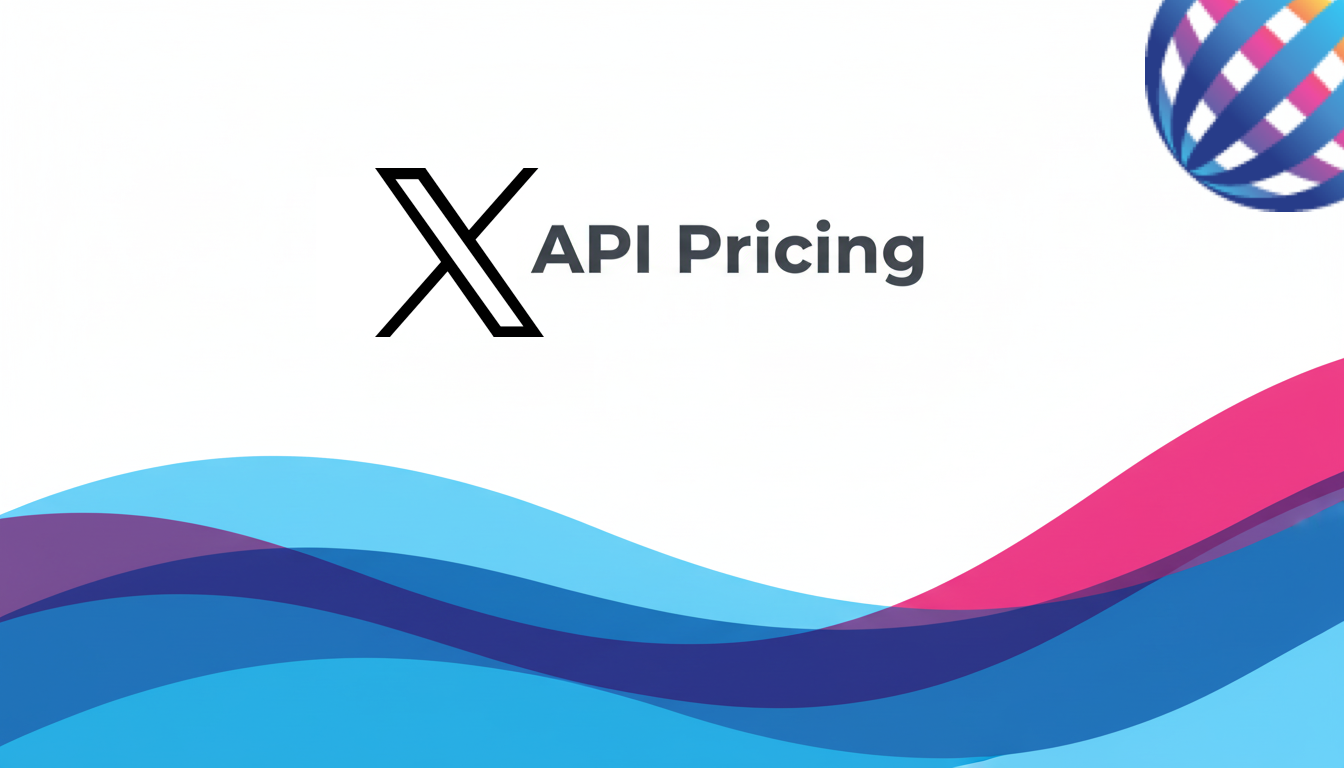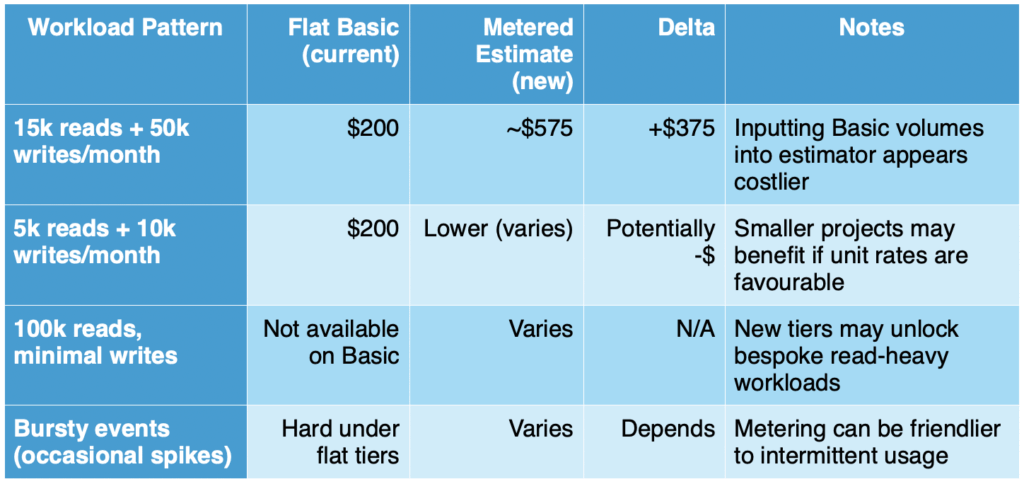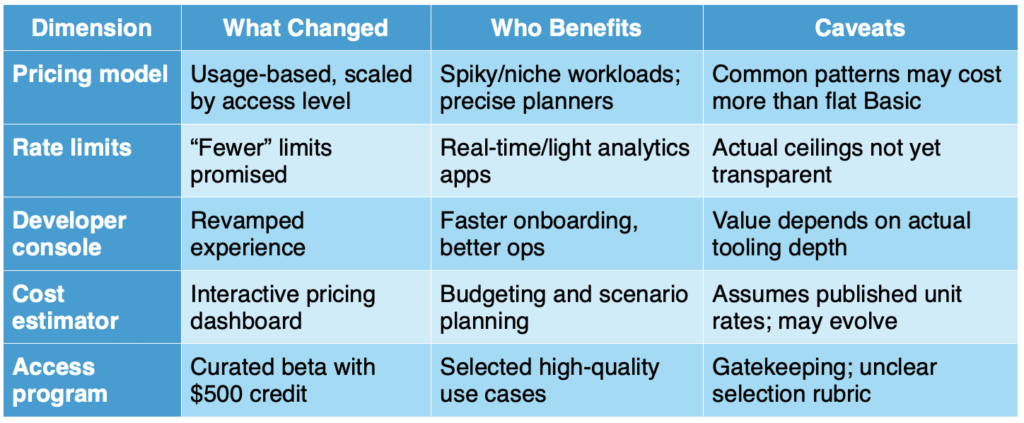X is taking another step to reengage its developer community with a new approach to API access and pricing. The shift signals a potential recalibration of openness, flexibility, and long-term ecosystem trust. As the platform redefines its terms of collaboration, MEF CEO Dario Betti takes a look at what this reset could mean for developers.
A bid to reset relations with the developer community
X is trying to win back developers with a revised, usage-based pricing model for its API (revealed on October 21st 2025) , backed by a revamped developer console and an application-only beta that includes a $500 build voucher for selected participants.

The company frames the move as an “open up” moment: fewer rate limits, scaled pricing keyed to actual consumption, and a more modern console experience designed to reduce friction.
As the Mobile Ecosystem Forum (MEF) would typically note in similar shifts, pricing is only one part of the platform calculus. Reliability, governance, and clarity of terms are equally decisive. Against that broader backdrop, we will look at what’s changed, what it may cost, who stands to benefit, and where the uncertainties lie.
What’s new: From flat fees to metered access
X’s latest evolution marks a departure from its previous flat-fee model, introducing a usage-based billing system that charges developers according to their actual data consumption and access volume. This transition comes with fewer rate limits and more granular control over API usage, offering greater flexibility tailored to diverse project scales and needs. Alongside pricing, X is also promising a revamped developer experience, complete with a redesigned Dev Console aimed at simplifying onboarding, improving transparency, and enhancing observability and management tools. Central to this new approach is an interactive cost estimator, allowing developers to model and forecast expenses before committing to specific access tiers. However, participation is still selective: a controlled beta rollout will initially open to developers with “the best use cases,” each receiving a $500 API credit to begin experimentation. In essence, X’s shift reflects a broader industry movement toward metered access models, aligning cost with real value while maintaining safeguards against excessive data extraction and AI-driven scraping.
X’s new API pricing model reflects a pragmatic pivot: invite developers back with better tooling and more granular billing, while retaining controls that protect platform data and revenue.”
Context: Why the reset now?
After Elon Musk’s acquisition, X’s API landscape shifted: prices climbed, free tiers shrank, and rules tightened. These changes reduced third-party innovation and forced many formerly Twitter-connected apps to close. These moves were broadly seen as an effort to protect X from large-scale data scraping by AI projects and to diversify revenue through additional paid features, they also highlighted a familiar platform tradeoff. Over-constraining developers tends to erode utility and reduce the user value over the long term. Today, X appears to be edging back toward a middle path, seeking monetization while restoring enough third-party access to keep an ecosystem alive.
Early pricing signals: Not obviously cheaper
X’s revised pricing model offers more flexibility, but its value hinges on how each developer uses the API. Against today’s benchmark ( the $200/month Basic plan with roughly 15,000 reads and 50,000 writes) the new metered estimator prices the same workload at about $575/month, a notable increase for that specific pattern. The implication is clear: for many low-to-mid usage profiles, this won’t translate into savings. That said, teams with atypical access needs, such as high-write/low-read workloads or sporadic, bursty usage, may see benefits from the finer controls. In short, flexibility improves, but predictability and cost efficiencies remain to be determined.

Key uncertainties and what to watch
- Final unit rates: The estimator suggests some loads cost more than the Basic plan; detailed rate cards and public examples will clarify true value.
- Rate limits and quotas: “Fewer limits” is promising, but practical ceilings and enforcement will determine viability for real-time and analytics-heavy use cases.
- Beta selection criteria: The phrase “only the best use cases and developers” implies prioritization—likely toward applications that align with X’s moderation, safety, or commercial aims.
- Longevity of terms: Enterprises seek multi-year stability. Public commitments on pricing windows and change management would bolster confidence.
Balanced outlook
X’s new API pricing model reflects a pragmatic pivot: invite developers back with better tooling and more granular billing, while retaining controls that protect platform data and revenue. The direction is constructive, particularly the estimator, console improvements, and credits, but early comparisons suggest it won’t be universally cheaper. For many, the question won’t be “Is this cheaper?” but “Is this stable, predictable, and worth building on?”
For now, this feels like an incremental step that could reopen some doors for third-party innovation without fully reversing post-acquisition constraints. Whether it catalyses a meaningful resurgence in X’s developer ecosystem will depend on unit economics, policy clarity, and trust rebuilt over time.
Takeaway summary

Final word
X’s move toward usage-based pricing and better developer tooling is welcome; especially after a period of turbulence that narrowed the platform’s third-party footprint. It may not be a clear cost win for typical “Basic-like” workloads, but it can provide more control for specialized or variable usage.
The broader test will be stability and trust: if X can offer predictable economics and consistent policy over time, the ecosystem will likely respond. For now, this is a cautious positive, with close attention warranted on the numbers behind the narrative.





